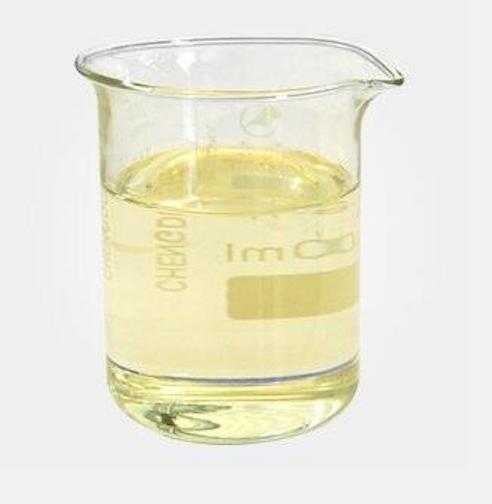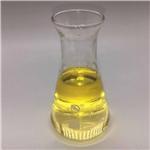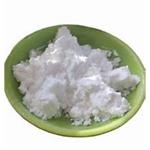2-Methyl-3-(3,4-methylenedioxyphenyl)propanal: Chemical synthesis and toxicity
Apr 13,2023
General description
2-Methyl-3-(3,4-methylenedioxyphenyl)propanal is a fragrance ingredient used in decorative cosmetics, fine fragrances, shampoos, toilet soaps and other toiletries as well as in non-cosmetic products such as household cleaners and detergents. Its worldwide use is greater than 100 metric tonnes per annum [1]. It is a colorless to slight yellow liquid with a sweet floral and mildly herbaceous odor of "considerable tenacity". Its appearance is as follows:

Figure 1 Appearance of 2-Methyl-3-(3,4-methylenedioxyphenyl)propanal.
Chemical synthesis
2-Methyl-3-(3,4-methylenedioxyphenyl)propanal can be synthesized by two steps according to the previous work [2]. Step 1: To a stirred solution of 9.0 grams of 5-(2-methyl-2-propen-1-yl)-1,3- benzodioxole (prepared as in Example 2, Step A) in 100 grams of methylene chloride was added portion wise, 12.0 grams of meta-chloroperbenzoic acid, while maintaining a reaction temperature of about 35 °C. After complete addition, the mixture was stirred at 35 °C for two hours. The reaction mixture was filtered and the filter cake rinsed with 10 mL of methylene chloride. The combined filtrate was extracted twice with 100 g portions of an aqueous 5% sodium sulfate solution followed by two 50 mL portions of water. The organic phase was concentrated under reduced pressure and the residue purified by column chromatography on silica gel to yield product. Yield: 9.0 grams, oil. 1H NMR (CDCl3, 300MHz): 1.27 (s, CH3, 3H), 2.60-2.65 (m, CH2, 2H), 2.72-2.83 (m, CH2, 2H), 5.94 (s, CH2, 2H), 6.64-6.76 (m, Ph, 3H).
Step 2: A mixture of 1.0 gram of 3-(1,3-benzodioxol-5-yl-methyl)-3-methyl-2- oxirane obtained in step 1, 0.004 gram of bismuth (III) 1,1,1-trifluoromethane sulfonic acid and 10 grams of methylene chloride was stirred at 20 °C to 25 °C for two hours. The reaction mixture was extracted twice with water. Analysis of the organic phase by gas chromatography indicated 48% methylene chloride and 45% helional. The organic phase was evaporated under reduced pressure and the residue purified by column chromatography to yield 2-Methyl-3-(3,4-methylenedioxyphenyl)propanal. Appreance: oil. 1H NMR (CDCl3, 300MHz): 1.07-1.10 (d, CH3, 3H), 2.50-2.65 (m, CH2, 2H), 2.97-3.03 (m, CH, 1H), 5.93 (s, CH2, 2H), 6.60-6.75 (m, Ph, 3H), 9.70 (s, CHO, 1H); 13C NMR (CDCl3, 300MHz): 204.3, 147.7, 146.1, 132.4, 121.9, 109.3, 108.2, 100.9, 48.2,36.4, 13.1).
Toxicity
Because of the wide range of product availability, there is dermal exposure associated with the use of 2-Methyl-3-(3,4-methylenedioxyphenyl)propanal. The In vitro penetration and subchronic toxicity of it was determined in the previous work [3]. 20 mL of a 1% solution of radiolabeled 2-Methyl-3-(3,4-methylenedioxyphenyl)propanal in ethanol was applied to the surface of epidermal membranes isolated from full thickness human skin samples and placed in diffusion cells. Samples of the receptor fluid (50% ethanol/water) were harvested at 2, 8, 24, and 48 h and analyzed by liquid scintillation chromatography to assess dermal absorption. At 24 and 48 h, respectively, 42% and 50% of the applied dose of 2-Methyl-3-(3,4-methylenedioxyphenyl)propanal had permeated the human skin in vitro. Only 67% of the applied dose was recovered by 48 h.
For the subchronic toxicity, 2-Methyl-3-(3,4-methylenedioxyphenyl)propanal was applied dermally once daily to male and female Sprague–Dawley rats (15/sex/group) at 50, 150, or 300 mg/kg/day (0.043, 0.129, or 0.259 mL/kg/day applied neat to 5 cm2 dorsal skin) for at least 90 consecutive days. A control group (15/sex) was given vehicle (reverse osmosis water) at 0.259 mL/kg/day for a similar duration. Rats were necropsied at the end of treatment (10/sex/group) or following a 4-week recovery period (5/sex/group). The following parameters were evaluated: dermal irritation, estrous cycle, ophthalmologic examinations, body weight, feed consumption, hematology, blood coagulation, serum chemistry, organ weights, macroscopic and histopathologic examinations, and male reproductive assessment. No test article-related mortalities or effects on, estrous cycles, ophthalmic exams, mean body weights, mean body weight change, feed consumption, absolute or relative organ weights, macroscopic observations, or male reproductive morphology/function were observed. 2-Methyl-3-(3,4-methylenedioxyphenyl)propanal -related dermal irritation was observed across all dose levels with increased incidence and severity at 300 mg/kg/day. Dermal irritation that initially ranged from slight to marked improved to slight or resolved completely during the recovery phase.
[2]McMullen et al. Purification process for para-methallylpyrocatechol useful as a precursor for the prepn. of flavor and fragrance compds. PCT Int. Appl., 2012173842, 20 Dec 2012.
[3]Ford et al. Criteria for development of a database for safety evaluation of fragrance ingredients. Regulatory Toxicology and Pharmacology 2000, 31, 166–181.
- Related articles
- Related Qustion
- 2-Methyl-3-(3,4-methylenedioxyphenyl)propanal induces Ca2+ decrease and serotonin secretion via a PKG-mediated pathway Jan 8, 2024
2-Methyl-3-(3,4-methylenedioxyphenyl)propanal can induce a dose-dependent decrease in Ca2+ levels in QGP-1 cells, potentially important for fragrance development and olfactory research.
Poly(acrylic acid) is a polymer of acrylic acid, which has a carboxylic group on each monomer unit. It is often used as gels in cosmetics and personal care products.....
Apr 13,2023Chemical MaterialsBromelain is a group of enzymes found in the fruit and stem of the pineapple plant. Bromelain is a type of proteolytic enzyme derived from the stems and juice of pineapples (Ananas comosus).....
Apr 13,2023Food AdditivesYou may like
2-Methyl-3-(3,4-methylenedioxyphenyl)propanal manufacturers
- 2-Methyl-3-(3,4-methylenedioxyphenyl)propanal
-

- $1.00 / 1g
- 2024-11-17
- CAS:1205-17-0
- Min. Order: 1g
- Purity: 99%
- Supply Ability: 1000kg
- Helional
-

- $30.00/ kg
- 2024-11-15
- CAS:1205-17-0
- Min. Order: 1kg
- Purity: 99%
- Supply Ability: 20ton
- 2-Methyl-3-(3,4-methylenedioxyphenyl)propana
-

- $6.00 / 1kg
- 2024-11-15
- CAS:1205-17-0
- Min. Order: 1kg
- Purity: 99%
- Supply Ability: 2000KG/Month






